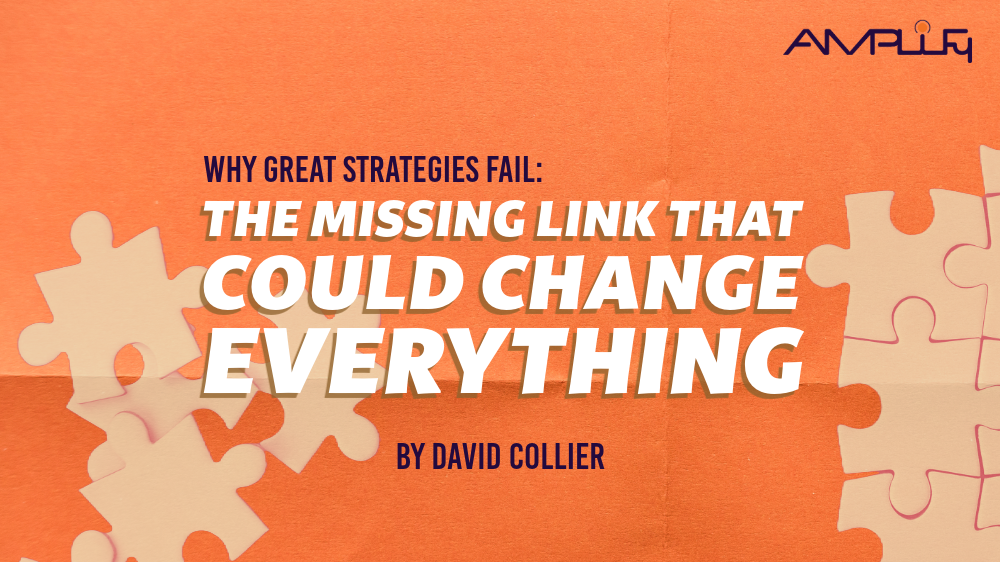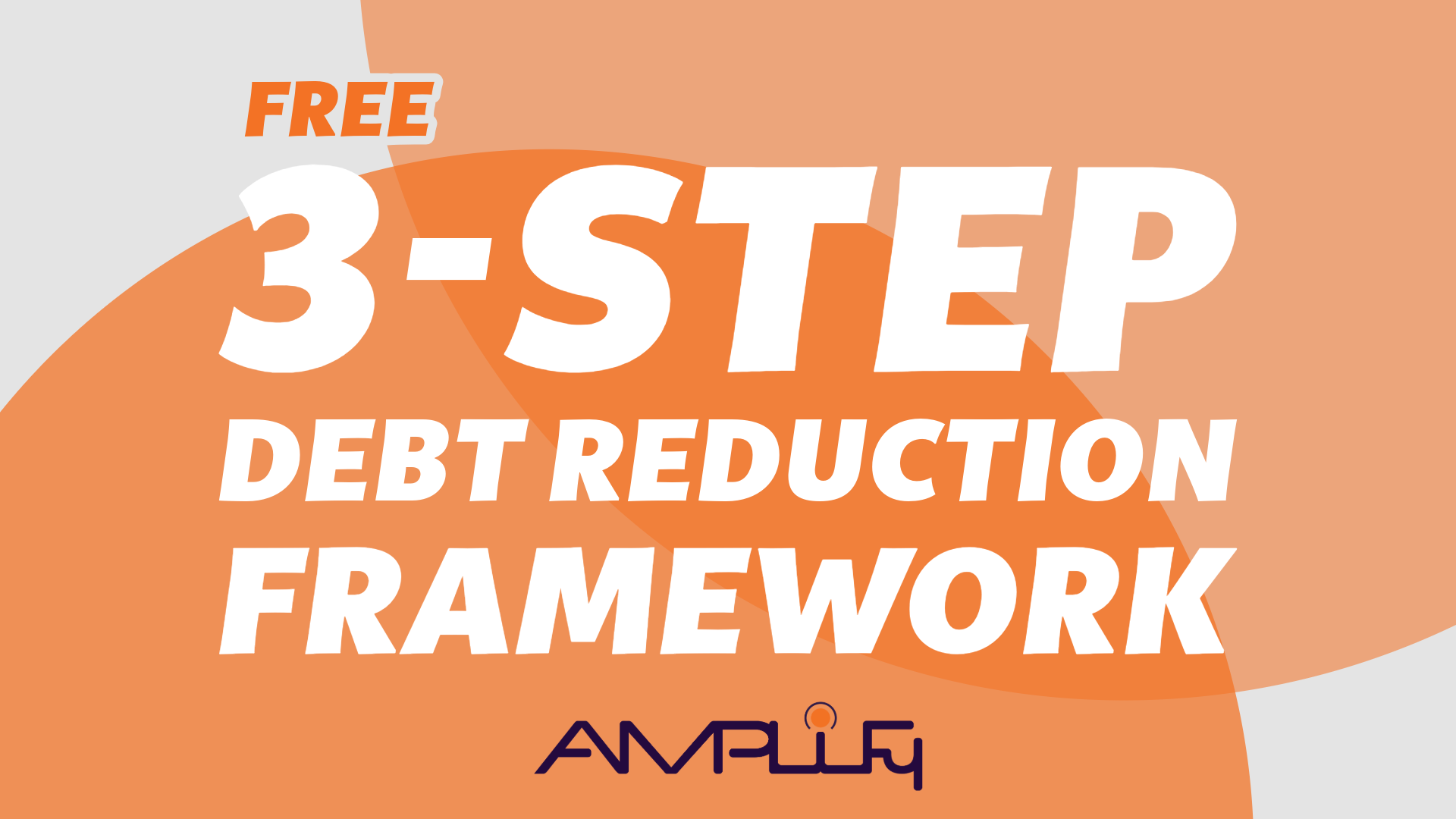Articles & Thought Pieces

By Matt Trembicki
•
March 26, 2025
Talent is the single biggest factor in whether a high-growth company thrives or stalls. As companies scale, the challenge shifts from just hiring quickly to hiring the right people who can grow with the business. At Amplify Resources Group, we’ve seen firsthand how hiring missteps can slow down even the most promising companies: Bad hires cost companies 30% of annual salary in lost productivity and rehiring costs. Hiring delays can set growth targets back 6-12 months. Companies that don’t hire for future needs end up in constant reactive mode , always playing catch-up. So, how do you build a scalable and future-proof talent strategy? Here’s our 4-step framework to help high-growth companies hire, develop, and retain the right people for sustainable success.

By David Collier
•
March 18, 2025
In business, success isn’t just about having a vision—it’s about execution. Many organizations struggle, not because they lack ambition, human capital or intelligence, but rather they fail to connect the aspirational to the day-to-day actions. Why Businesses Fail Without Alignment Without a structured framework , companies often experience: Disjointed Efforts: Teams working on initiatives that don’t support or align to the broader organizational goals. Lack of Accountability: No clear way to measure success or failure. Strategy-Execution Gap: A great plan that never materializes into results. Resource Challenges: staff working on various projects and not aligned or allocated to the “right” projects. The missing link? A structured framework that ensures every step moves the business forward and you have traceability throughout your organization. That’s where the GOST Model comes in: Goals, Objectives, Strategies, and Tactics . When these four elements align, businesses can transform their plans from well-intentioned ideas into tangible and valuable results. Let’s break it down with some real-world examples:
By Ida Ydo
•
February 11, 2025
Leading a transformation initiative—whether it’s an operational overhaul, technology upgrade, or strategic shift—can feel like navigating a moving puzzle. With shifting priorities, multiple stakeholders, and unexpected roadblocks, it’s easy to lose track of progress. That’s why we created the Transformation Initiative Tracker—a simple, structured tool to help leaders stay organized, track milestones, manage risks, and measure success. This tracker keeps everything in one place so you can make informed decisions, adjust course when needed, and ensure your initiatives deliver real impact. Download the free template now and take the guesswork out of your transformation efforts!

By Nick DeLois
•
February 7, 2025
Drive for Show, Putt for Dough In golf, there are few better moments on the course than watching a perfectly struck drive soar down the middle of the fairway. It may even garner a few “oohs” and “ahhs” from your playing partners, making it a shot that everyone wants to have in the bag. However, there’s a reason why professional golfers spend a majority of their practice time on their short game. Most tournaments and matches won’t be decided by distance of the tee, but rather by touch and feel on the greens. The same can be said in business. Big, attention-grabbing moves might turn heads, but long-term success hinges on the steady, deliberate work put in on a day-in and day-out basis. The Allure of the Big Drive The long drive is the showstopper of golf – a display of power that leaves an impression and sets the tone for the hole ahead. In business, the equivalent might be a high-profile launch, landing a big client or debuting an exciting, new marketing campaign. These big, bold moves create excitement and are undeniably important to generate momentum and stand out amongst competitors. But here’s the catch: A long drive is only the first step. If it’s not followed up with a strong short game, it’s unlikely to translate into long-term success. Similarly, in business, bold strategies and big moves need to be supported by detailed execution. A viral campaign brings in leads, but without a solid sales function ready to capitalize on that opportunity, those leads never turn into customers. The big drive sets the stage, but it’s what comes next that will determine the ultimate payoff. The Short Game In golf, putting is where a match or tournament is won or lost. It may not always be the flashiest aspect of the game, but it tends to make the biggest impact. This same principle can be applied in business. Operational excellence, attention to detail and follow-through are the “short game” of the business world. Behind every successful initiative lies a network of coordinated efforts that work together to ensure that potential transforms into measurable results. The short game may not grab headlines, but it’s what closes deals, builds trust and creates lasting value. It’s the quiet, steady work that ensures that the bold moves pay off. Finding the Balance Success in golf, as in business, requires a balance between power and precision. Focusing exclusively on one at the expense of the other leads to missed opportunities. The key is to develop both skills and create an environment where the long game and short game compliment each other. High-impact moves are essential for growth and innovation, and they must be supported by day-to-day operational efficiency. Business leaders should regularly assess this balance within their own organization and determine if they’re striking the right balance. Conclusion In golf, the best players are those who can drive and putt the ball efficiently. They know that success comes from mastering both the long and short game. In business, it’s key to have bold ideas and strategies that are backed up by careful, consistent execution. If you’re able to create the perfect balance, you’ll put your team in good shape to hit a lot of fairways and sink a lot of putts.

By Matt Trembicki
•
March 26, 2025
Talent is the single biggest factor in whether a high-growth company thrives or stalls. As companies scale, the challenge shifts from just hiring quickly to hiring the right people who can grow with the business. At Amplify Resources Group, we’ve seen firsthand how hiring missteps can slow down even the most promising companies: Bad hires cost companies 30% of annual salary in lost productivity and rehiring costs. Hiring delays can set growth targets back 6-12 months. Companies that don’t hire for future needs end up in constant reactive mode , always playing catch-up. So, how do you build a scalable and future-proof talent strategy? Here’s our 4-step framework to help high-growth companies hire, develop, and retain the right people for sustainable success.

By David Collier
•
March 18, 2025
In business, success isn’t just about having a vision—it’s about execution. Many organizations struggle, not because they lack ambition, human capital or intelligence, but rather they fail to connect the aspirational to the day-to-day actions. Why Businesses Fail Without Alignment Without a structured framework , companies often experience: Disjointed Efforts: Teams working on initiatives that don’t support or align to the broader organizational goals. Lack of Accountability: No clear way to measure success or failure. Strategy-Execution Gap: A great plan that never materializes into results. Resource Challenges: staff working on various projects and not aligned or allocated to the “right” projects. The missing link? A structured framework that ensures every step moves the business forward and you have traceability throughout your organization. That’s where the GOST Model comes in: Goals, Objectives, Strategies, and Tactics . When these four elements align, businesses can transform their plans from well-intentioned ideas into tangible and valuable results. Let’s break it down with some real-world examples:
By Ida Ydo
•
February 11, 2025
Leading a transformation initiative—whether it’s an operational overhaul, technology upgrade, or strategic shift—can feel like navigating a moving puzzle. With shifting priorities, multiple stakeholders, and unexpected roadblocks, it’s easy to lose track of progress. That’s why we created the Transformation Initiative Tracker—a simple, structured tool to help leaders stay organized, track milestones, manage risks, and measure success. This tracker keeps everything in one place so you can make informed decisions, adjust course when needed, and ensure your initiatives deliver real impact. Download the free template now and take the guesswork out of your transformation efforts!

By Nick DeLois
•
February 7, 2025
Drive for Show, Putt for Dough In golf, there are few better moments on the course than watching a perfectly struck drive soar down the middle of the fairway. It may even garner a few “oohs” and “ahhs” from your playing partners, making it a shot that everyone wants to have in the bag. However, there’s a reason why professional golfers spend a majority of their practice time on their short game. Most tournaments and matches won’t be decided by distance of the tee, but rather by touch and feel on the greens. The same can be said in business. Big, attention-grabbing moves might turn heads, but long-term success hinges on the steady, deliberate work put in on a day-in and day-out basis. The Allure of the Big Drive The long drive is the showstopper of golf – a display of power that leaves an impression and sets the tone for the hole ahead. In business, the equivalent might be a high-profile launch, landing a big client or debuting an exciting, new marketing campaign. These big, bold moves create excitement and are undeniably important to generate momentum and stand out amongst competitors. But here’s the catch: A long drive is only the first step. If it’s not followed up with a strong short game, it’s unlikely to translate into long-term success. Similarly, in business, bold strategies and big moves need to be supported by detailed execution. A viral campaign brings in leads, but without a solid sales function ready to capitalize on that opportunity, those leads never turn into customers. The big drive sets the stage, but it’s what comes next that will determine the ultimate payoff. The Short Game In golf, putting is where a match or tournament is won or lost. It may not always be the flashiest aspect of the game, but it tends to make the biggest impact. This same principle can be applied in business. Operational excellence, attention to detail and follow-through are the “short game” of the business world. Behind every successful initiative lies a network of coordinated efforts that work together to ensure that potential transforms into measurable results. The short game may not grab headlines, but it’s what closes deals, builds trust and creates lasting value. It’s the quiet, steady work that ensures that the bold moves pay off. Finding the Balance Success in golf, as in business, requires a balance between power and precision. Focusing exclusively on one at the expense of the other leads to missed opportunities. The key is to develop both skills and create an environment where the long game and short game compliment each other. High-impact moves are essential for growth and innovation, and they must be supported by day-to-day operational efficiency. Business leaders should regularly assess this balance within their own organization and determine if they’re striking the right balance. Conclusion In golf, the best players are those who can drive and putt the ball efficiently. They know that success comes from mastering both the long and short game. In business, it’s key to have bold ideas and strategies that are backed up by careful, consistent execution. If you’re able to create the perfect balance, you’ll put your team in good shape to hit a lot of fairways and sink a lot of putts.






